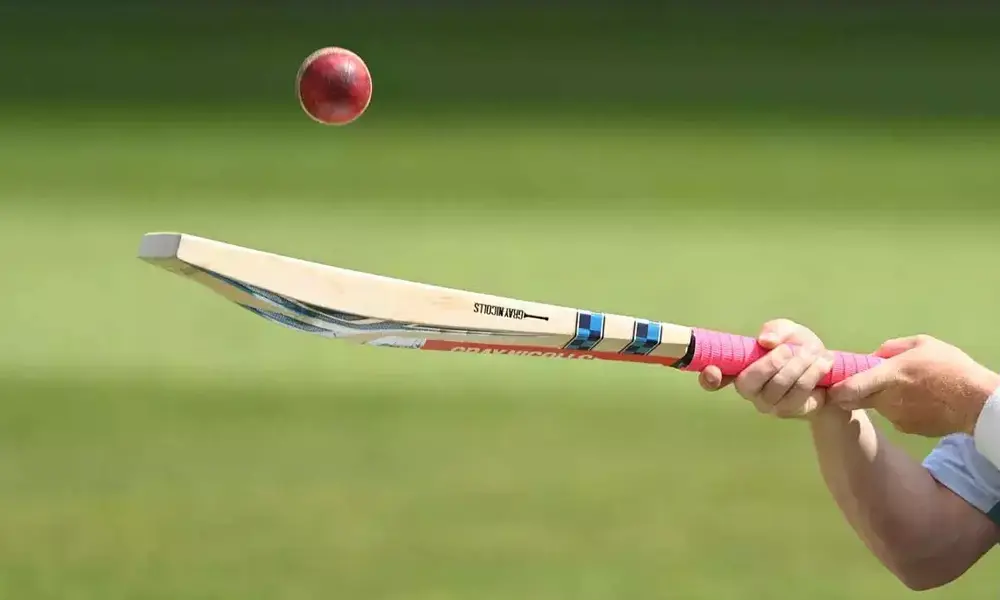Unveiling the Science: Exploring the Intricacies of Cricket Bat Design

In the fast-paced world of cricket, where split-second decisions and precision execution can determine the outcome of a match, every piece of equipment plays a crucial role. Among these, the cricket bat stands as a quintessential tool, serving as the conduit through which players channel their skill and power to propel the ball to victory. But what lies beneath the sleek surface of a cricket bat? Join us as we delve into the fascinating world of cricket bat design and uncover the science behind its engineering.
The Anatomy of a Cricket Bat
Before we dive into the science behind cricket bat design, let's first understand its anatomy. A typical cricket bat consists of several key components: the blade, the handle, the grip, and the stickers. Each element plays a vital role in the bat's performance and functionality, from the blade's striking surface to the handle's grip and control.
Materials Matter
At the heart of every cricket bat lies the choice of materials used in its construction. Traditionally, cricket bats were made from English willow, prized for its combination of strength, flexibility, and responsiveness. However, modern bat makers also utilize alternative materials such as composite fibers and carbon fiber to enhance performance and durability.
Engineering the Blade
The blade of a cricket bat is where the magic happens. It's carefully engineered to maximize power, precision, and performance. Bat makers meticulously shape the blade to create a balance between power and control, ensuring that the sweet spot—the area where maximum power is generated—is optimized for peak performance.
Sweet Spot Optimization
Ah, the sweet spot—the holy grail of cricket bat design. This elusive area on the blade is where the ball makes perfect contact, resulting in maximum power and distance. Bat makers use sophisticated techniques such as computer-aided design (CAD) and finite element analysis (FEA) to precisely position and optimize the sweet spot for each bat.
Handle Dynamics
While the blade may get all the glory, the handle is equally crucial for a batsman's performance. It's responsible for providing grip, control, and feel, allowing players to wield the bat with precision and confidence. Bat makers carefully design the handle's shape, size, and grip to optimize comfort and performance for players of all skill levels.
Balancing Act
Achieving the perfect balance between power and control is the ultimate goal of cricket bat design. Bat makers carefully adjust factors such as blade thickness, handle length, and weight distribution to create a bat that feels comfortable and responsive in the hands of the player while delivering maximum power and precision on the field.
Testing and Iteration
The science of cricket bat design is a continuous process of testing, iteration, and refinement. Bat makers subject their prototypes to rigorous testing in the lab and on the field, collecting data on factors such as bat speed, impact force, and ball trajectory to identify areas for improvement. This iterative process ensures that each generation of cricket bats pushes the boundaries of performance and innovation.
Future Trends
As technology advances and new materials become available, the future of cricket bat design holds boundless possibilities. From smart bats with embedded sensors to bio-inspired designs that mimic the structure of natural materials, the next generation of cricket bats is poised to revolutionize the game and empower players to reach new heights of performance and excellence.
Conclusion
In conclusion, the science behind cricket bat design is a fascinating blend of engineering, materials science, and biomechanics. From optimizing the sweet spot to balancing power and control, every aspect of a cricket bat is carefully engineered to enhance performance and empower players to achieve their full potential on the field. So, the next time you step up to the crease, take a moment to appreciate the science behind the bat in your hands—and swing away with confidence and precision.

